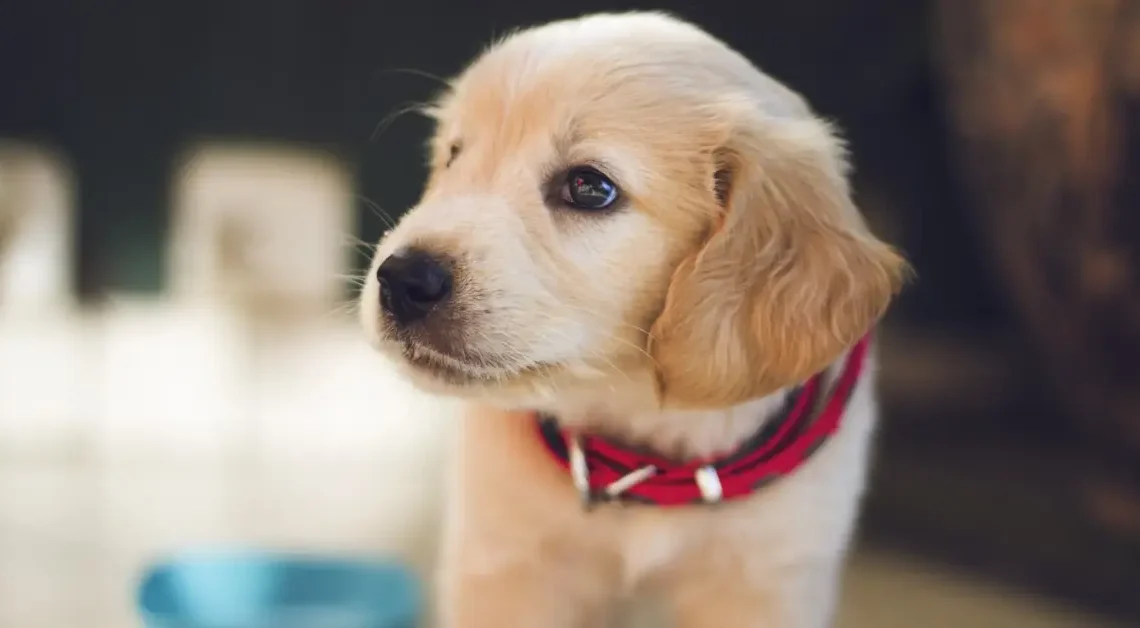
Mastering 8-Week-Old Puppy Potty Training in an Apartment
Potty training a puppy can be a daunting task, especially in an apartment setting where space is limited. However, with the right approach and consistency, it’s possible to accomplish this feat efficiently. In this guide, we’ll delve into the specifics of potty training your 8-week-old puppy in an apartment, focusing on establishing a routine, utilizing a crate, understanding your puppy’s behavior, and mastering a seven-day training schedule.
Establishing a Routine for 8-Week-Old Puppy Potty Training
Puppies, much like babies, thrive on routines. Establishing a consistent schedule is key to successful potty training, especially for an 8-week-old puppy in an appartment. At this age, they are just beginning to understand the world around them and are eager to learn. By setting a routine, you’re not only teaching them where and when to potty, but you’re also instilling good habits that will last a lifetime.
Frequent Bathroom Breaks: Recognize that an 8-week-old puppy has limited bladder control, so they’ll need to go out frequently. Aim to take them outside every hour or two, especially after waking up, eating, drinking, or playing. By doing this consistently, you’re reducing the chances of accidents indoors.
Designate a Bathroom Spot: Choose a specific spot outside where you want your puppy to do their business. This helps them understand what is expected of them when they’re taken outside. Using a leash, guide them to this spot each time they need to go.
Use a Command: Introduce a specific word or phrase, such as “Go potty,” while your puppy is eliminating. This verbal cue will eventually prompt them to go when you say it, making outdoor potty breaks more efficient.
Reward and Praise: Positive reinforcement is crucial in potty training. Whenever your puppy successfully goes potty outside, immediately praise them and offer a small treat. This positive association encourages them to repeat the behavior.
Feeding and Water Schedule: Establish set times for feeding your puppy, which will help regulate their bathroom habits. Remove their water dish a couple of hours before bedtime to minimize nighttime accidents.
Supervision and Confinement: Since you can’t watch your puppy every minute, confine them to a small area when unsupervised. This could be a section of a room blocked off with baby gates or a crate. Crates can also aid in potty training as most puppies won’t soil their sleeping area.
Expect Accidents: Understand that accidents are inevitable during the potty training process. Instead of punishing your puppy for accidents, calmly clean up the mess and continue with the training. Punishment can create fear and hinder progress.
Utilizing a Crate for Potty Training an 8 Week Old Puppy in an Apartment
When it comes to potty training your 8-week-old puppy in an apartment, one of the most valuable tools at your disposal is a crate. However, it’s essential to understand that a crate is not just a cage; it’s a safe and secure space for your puppy to sleep, relax, and learn.
Creating a Safe Haven
First and foremost, it’s crucial to establish the crate as a positive and welcoming environment for your puppy. This begins by selecting the right size crate – one that is large enough for your 8-week-old puppy to stand up, turn around, and lie down comfortably, but not so spacious that they can designate one area for sleeping and another for elimination.
Tapping into Natural Instincts
Dogs are den animals by nature, which means they have an inherent instinct to seek out small, enclosed spaces for rest and security. By providing your 8-week-old puppy with a crate, you’re appealing to this natural inclination, making it less likely that they’ll soil their sleeping area.
Introducing the Crate
When introducing your 8-week-old puppy to the crate, it’s essential to do so gradually and with positive reinforcement. Start by placing soft bedding, familiar toys, and treats inside the crate to make it inviting. Encourage your puppy to explore the crate at their own pace, and never force them inside.
Positive Association
To ensure that your 8-week-old puppy views the crate as a positive space, associate it with pleasant experiences. Offer treats, praise, and affection whenever your puppy enters the crate voluntarily. Avoid using the crate as a form of punishment, as this can create negative associations and undermine the effectiveness of crate training.
Establishing a Routine
Incorporating the crate into your 8-week-old puppy’s daily routine is key to successful potty training. Use the crate as a tool for managing your puppy’s access to the apartment, particularly when you’re unable to supervise them closely. By confining your puppy to the crate during times when they’re not actively engaged in play, eating, or potty breaks, you can prevent accidents and encourage them to hold their bladder until they’re taken outside.
Gradual Increase in Duration
As your 8-week-old puppy becomes more accustomed to the crate, gradually increase the amount of time they spend inside. Start with short intervals – just a few minutes at a time – and gradually extend the duration as your puppy grows more comfortable. Always monitor your puppy’s behavior for signs of distress or anxiety, and be prepared to adjust your approach accordingly.
Nighttime Crating
Nighttime crating is an essential component of potty training for an 8-week-old puppy, especially in an apartment, as it helps prevent accidents while you sleep. Place the crate in your bedroom initially, so your puppy feels reassured by your presence. As they grow more confident, you can gradually move the crate to its permanent location elsewhere in the apartment. Remember to take your puppy outside for a final potty break before bedtime, and refrain from feeding or offering water close to bedtime to minimize nighttime accidents.
Consistency and Patience
Above all, consistency and patience are key to successful crate training and potty training for an 8-week-old puppy in an apartment. Establishing a routine, providing positive reinforcement, and being patient with your puppy’s progress will ultimately lead to success. With time and dedication, your 8-week-old puppy will learn to associate the crate with safety, security, and proper potty behavior, setting the stage for a lifetime of positive habits.
Also read: Why is Positive Reinforcement Not Working? And How to Fix It
Choosing the Right Crate Size
When selecting a crate for your puppy, it’s crucial to consider their size and growth potential. The crate should be large enough for your puppy to stand up, turn around, and lie down comfortably, but not so spacious that they can use one end as a bathroom area.
For smaller breeds such as Chihuahuas, Yorkshire Terriers, or Maltese, a crate size of around 24 inches in length is typically suitable. Medium-sized breeds like Beagles, Bulldogs, or Cocker Spaniels may require a crate size of around 30 to 36 inches. Larger breeds such as Labrador Retrievers, Golden Retrievers, or German Shepherds may need a crate size of 42 to 48 inches.
Using a divider panel can help adjust the crate’s size as your puppy grows, ensuring that they have enough space without providing too much room for accidents. As your puppy grows, you can gradually increase the crate size or remove the divider panel altogether to accommodate their needs.
Developing a Plan for Absence
When you’re away from home for extended periods, it’s crucial to have a plan in place for your 8-week-old puppy potty training in an apartment. Leaving a young puppy alone for too long can lead to accidents and setbacks in their training progress. Here are some strategies to consider:
Arranging Assistance
Since young puppies have limited bladder control, it’s essential to arrange for someone to take them out for bathroom breaks if you’ll be away for an extended period. This could be a responsible neighbor, a trusted friend, or a professional pet sitter. Having someone available to let your puppy out at regular intervals helps prevent accidents and reinforces their potty training routine.
Indoor Potty Training Options
In situations where outdoor access is limited, such as living in an apartment or during inclement weather, indoor potty training alternatives can be invaluable. There are several options to explore:
- Pee Pads: Pee pads are absorbent pads that provide a designated spot for your puppy to eliminate indoors. They are convenient and can be placed in a specific area of your apartment, making cleanup easier. When using pee pads, it’s essential to consistently encourage your puppy to use them and gradually transition them to outdoor potty habits as they grow older.
- Grass Patches: For apartment dwellers with a balcony or terrace, grass patches offer a natural outdoor-like experience for your puppy. These patches simulate the feeling of grass under their paws, making them a more appealing option for potty training. Additionally, grass patches can be easily cleaned and maintained, providing a convenient solution for indoor potty training.
- Indoor Dog Potties: Indoor dog potties, similar to litter boxes for cats, provide a designated area for your puppy to relieve themselves indoors. These potties often come with artificial turf or absorbent pads to mimic outdoor conditions. Indoor dog potties are ideal for apartment living or situations where outdoor access is limited, offering a convenient and hygienic solution for potty training.
Final Words
Potty training an 8-week-old puppy in an apartment requires dedication, patience, and consistency. By establishing a routine, utilizing a crate, understanding your puppy’s behavior, and following a structured training schedule, you can effectively teach your puppy where and when to relieve themselves. With perseverance and the right approach, you’ll soon enjoy the benefits of a well-trained and confident puppy in your apartment.
Related:


